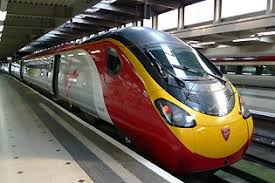On shorter lines, the open-access approach is harder to pull off. Busy commuter routes have such tightly packed services that arranging a timetable around several companies would be a recipe for chaos. So an alternative approach is to grant concessions in which a single operator signs a contract to run all services on a line, and sometimes to maintain the track as well. London’s Docklands Light Railway, which has the happiest rail passengers in the capital, is run like this by Keolis, a French firm. Three of Britain’s four most punctual rail firms are concessions.

Granting concessions doesn’t give passengers a choice about how they travel. Yet an element of competition can be introduced by re-opening alternative lines that were closed half a century ago. In 2016 Chiltern Railways opened a London-Oxford line that had been closed by British Rail in the 1960s, when rail use was in decline. Within a few months the incumbent on a rival line, GWR, cut ticket prices and introduced free Wi-Fi. Some have proposed reopening a 40-mile stretch of the Great Central Railway between Aylesbury and Rugby to provide competition for the West Coast mainline between London and the north.
译文由可可原创,仅供学习交流使用,未经许可请勿转载。












